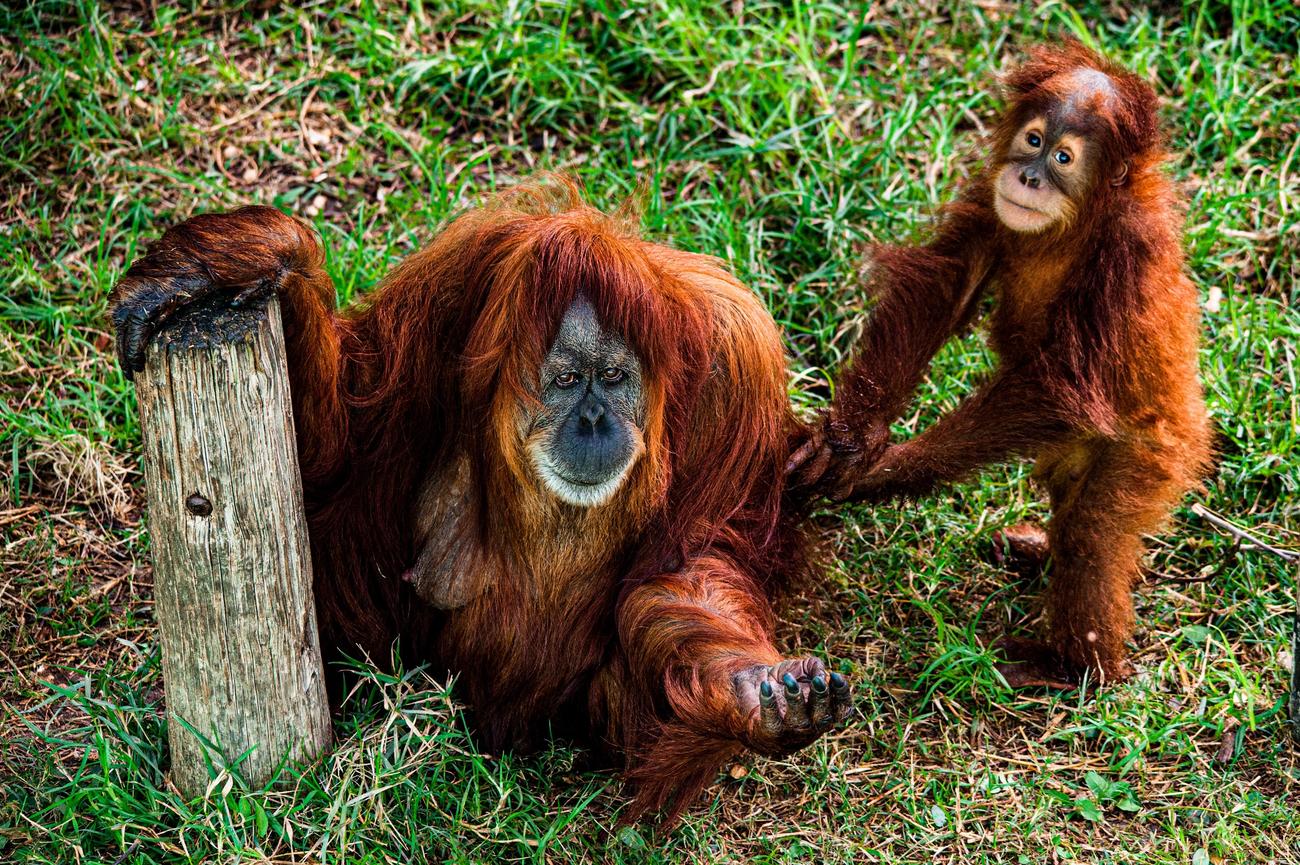If you’ve ever been captivated by the enchanting world of orangutans and their stunning habitats, get ready for a wild adventure! In this article, we’ll dive deep into the intriguing realm of orangutan habitat facts. From the lush rainforests they call home to the incredible relationships they share with their ecosystem, we’ll uncover the hidden wonders that make these habitats so vital for orangutans. So, buckle up and prepare to embark on a journey that will leave you amazed and inspired by the fascinating world of orangutan habitats.

Orangutan Habitat Facts
Orangutans, the majestic primates of the rainforest, have captivated researchers and wildlife enthusiasts alike with their fascinating behaviors and complex relationships with their habitats. In this article, we will delve into the unique aspects of orangutan habitats and uncover some intriguing facts about these incredible creatures.
Where Orangutans Call Home
Orangutans are native to the tropical forests of Borneo and Sumatra, two islands brimming with biodiversity. Their preferred habitats include river valleys, floodplains, and a variety of forest types. Their top choices are peat swamp forests and dipterocarp forests, showcasing their preference for dense vegetation and rich biodiversity. However, it’s not uncommon to find orangutans venturing into lowland swamps, grasslands, agricultural areas, and even gardens. Their adaptability and ability to thrive in diverse landscapes highlight their remarkable survival skills.
The Arboreal Lifestyle
Orangutans are true masters of the trees, spending most of their lives navigating the lush canopy of the rainforest. These incredible primates can be found at various heights in the trees, from as low as 10 feet above ground to soaring heights of over 150 feet. Their ability to effortlessly move through the forest canopy is a testament to their agility and strength.
The “Gardeners” of the Forest
One of the crucial roles orangutans play in their habitats is that of “gardeners” of the forest. As they go about their daily activities, such as feeding on fruits, shoots, and leaves, orangutans unknowingly disperse seeds throughout the forest. These seeds then germinate, contributing to the regeneration and diversity of plant species in the ecosystem. In essence, orangutans are key players in maintaining the delicate balance of their habitat’s biodiversity.
Orangutans, as the “gardeners” of the forest, play a vital role in seed dispersal, contributing to the vibrant ecosystems they call home.
The Pivotal Importance of Protection
Understanding the habitat requirements and behaviors of orangutans is essential for their conservation. As human activities, such as deforestation and habitat degradation, continue to threaten their existence, it becomes increasingly vital to protect their habitats. By safeguarding the rainforests and ensuring the preservation of orangutan habitats, we contribute not only to the survival of these incredible creatures but also to the health and well-being of countless other species.
Conserving orangutan habitats is not just about protecting a single species; it is about safeguarding the delicate tapestry of life in the rainforest.
With every orangutan habitat fact we uncover, we gain a deeper appreciation for the intricate web of life within their ecosystems. By raising awareness about these facts and the urgent need for habitat protection, we take a step towards securing a brighter future for orangutans and the wondrous rainforests they call their home. It is up to each one of us to ensure that these remarkable creatures continue to thrive for generations to come.
Let us join hands in our endeavor to protect orangutan habitats, and together, we can make a difference in the future of these rainforest gems.
Table: Orangutan Habitat Facts (Markdown Format)
| Orangutan Habitat Facts |
|---|
| Native to Borneo and Sumatra |
| Prefers peat swamp and dipterocarp forests |
| Also occupies lowland swamps, grasslands, and gardens |
| Highly skilled in tree navigation |
| Plays a vital role in seed dispersal |
| Requires habitat protection for survival |
Orangutans are fascinating creatures with habitats that are full of interesting facts. Did you know that orangutans spend the majority of their time in the dense rainforests of Southeast Asia? They build elaborate nests every night to sleep in, using over 300 different materials! If you want to learn more about these incredible creatures and their habitat, check out our page on “Interesting Facts About Orangutans Habitat”. You’ll discover even more surprising information about their unique homes and behaviors. So, why wait? Click here to dive into the world of orangutans and their captivating habitats: Interesting Facts About Orangutans Habitat.
FAQ
Question 1
What types of forests do orangutans prefer to live in?
Answer 1
Orangutans prefer to live in peat swamp and dipterocarp forests. They also occupy lowland swamps and can be found in grasslands, agricultural areas, and even gardens.
Question 2
How high do orangutans typically live in trees?
Answer 2
Orangutans spend much of their time in trees, ranging from living about 10 feet from the ground to more than 150 feet up in the trees.
Question 3
What role do orangutans play in their habitats?
Answer 3
Orangutans are the “gardeners” of the forest and play a vital role in seed dispersal. They help maintain the balance of their ecosystems by spreading seeds as they move through their habitats.
Question 4
Where do orangutans primarily live?
Answer 4
Orangutans live in tropical forests in the river valleys and floodplains of their respective islands. They can be found in Borneo and Sumatra.
Question 5
What is the specialty of a wildlife researcher and writer focused on orangutan habitats?
Answer 5
A wildlife researcher and writer specialized in orangutan habitats has in-depth knowledge of rainforest ecology and understands the intricate relationships between orangutans and their ecosystems. They are skilled at conveying complex scientific information in a clear and accessible manner, while also advocating for habitat protection.
- SYBAU See You Baby Meaning: Gen Z Slang Evolves - July 1, 2025
- Unlock Your Inner Youth: Lifestyle Secrets for a Vibrant Life - July 1, 2025
- Decode SYBAU Meaning: Gen Z Slang Explained - July 1, 2025






